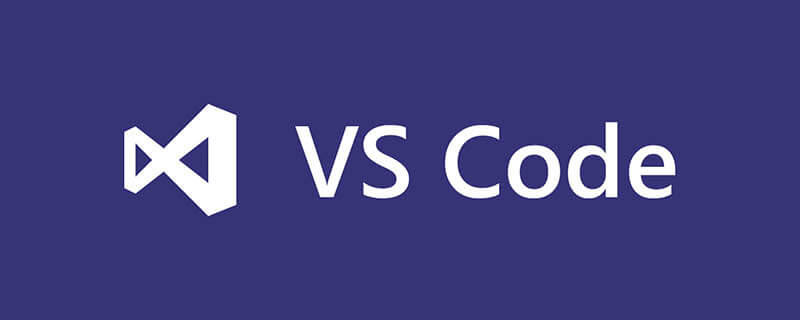We have to print the data of nodes of the linked list at the given index. Unlike array linked list generally don’t have index so we have to traverse the whole linked list and print the data when we reached a particular.
Let’s say, list contains the nodes 29, 34, 43, 56 and 88 and the value of indexes are 1, 2 and 4 than the output will be the nodes at these indexes that are 34, 43 and 88.

Example
Linked list: 29->34->43->56->88 Input: 1 2 4 Output: 34 43 88
In above representation of Linked List the yellow highlighted nodes are the nodes to be printed or the nodes which are on a particular index.
The approach used here involves taking of one pointer and one counter variable initialised to 1 that will incremented whenever the node is traversed. The counter is matched with the key value. When the key matches with the counter value the pointer pointing to the node structure will print the node’s data and incremented to next node and so on giving us the nodes at particular key.
The below code shows the c implementation of the algorithm given.
Algorithm
START
Step 1 -> create node variable of type structure
Declare int data
Declare pointer of type node using *next
Step 2 -> create struct node* intoList(int data)
Create newnode using malloc
Set newnode->data = data
newnode->next = NULL
return newnode
step 3 -> Declare function void displayList(struct node *catchead)
create struct node *temp
IF catchead = NULL
Print list is empty
return
End
Set temp = catchead
Loop While (temp != NULL)
print temp->data
set temp = temp->next
End
Step 4 -> Declare Function int search(int key,struct node *head)
Set int index
Create struct node *newnode
Set index = 0 and newnode = head
Loop While (newnode != NULL & newnode->data != key)
Set index++
Set newnode = newnode->next
End
return (newnode != NULL) ? index : -1
step 5 -> In Main()
create node using struct node* head = intoList(9)
call displayList(head)
set index = search(24,head)
IF (index >= 0)
Print index
Else
Print not found in the list
EndIF
STOPExample
#include <stdio.h>
#include <stdlib.h>
//structure of a node
struct node {
int data;
struct node *next;
};
struct node* intoList(int data) {
struct node* newnode = (struct node*)malloc(sizeof(struct node));
newnode->data = data;
newnode->next = NULL;
return newnode;
}
//funtion to display list
void displayList(struct node *catchead) {
struct node *temp;
if (catchead == NULL) {
printf("List is empty.</p><p>");
return;
}
printf("elements of list are : ");
temp = catchead;
while (temp != NULL) {
printf("%d ", temp->data);
temp = temp->next;
}
printf("</p><p>");
}
//function to search element
int search(int key,struct node *head) {
int index;
struct node *newnode;
index = 0;
newnode = head;
while (newnode != NULL && newnode->data != key) {
index++;
newnode = newnode->next;
}
return (newnode != NULL) ? index : -1;
}
int main() {
int index;
struct node* head = intoList(9); //inserting elements into a list
head->next = intoList(76);
head->next->next = intoList(13);
head->next->next->next = intoList(24);
head->next->next->next->next = intoList(55);
head->next->next->next->next->next = intoList(109);
displayList(head);
index = search(24,head);
if (index >= 0)
printf("%d found at position %d</p><p>", 24, index);
else
printf("%d not found in the list.</p><p>", 24);
index=search(55,head);
if (index >= 0)
printf("%d found at position %d</p><p>", 55, index);
else
printf("%d not found in the list.</p><p>", 55);
}输出
如果我们运行上面的程序,它将生成以下输出。
elements of list are : 9 76 13 24 55 109 24 found at position 3 55 found at position 4
The above is the detailed content of In C language, print the linked list node at the given index. For more information, please follow other related articles on the PHP Chinese website!
 (超详细)VScode中配置C语言环境的方法Dec 05, 2022 pm 07:05 PM
(超详细)VScode中配置C语言环境的方法Dec 05, 2022 pm 07:05 PMVScode中怎么配置C语言环境?下面本篇文章给大家介绍一下VScode配置C语言环境的方法(超详细),希望对大家有所帮助!
 c语言中node是什么意思Jul 06, 2022 pm 03:51 PM
c语言中node是什么意思Jul 06, 2022 pm 03:51 PM在C语言中,node是用于定义链表结点的名称,通常在数据结构中用作结点的类型名,语法为“struct Node{...};”;结构和类在定义出名称以后,直接用该名称就可以定义对象,C语言中还存在“Node * a”和“Node* &a”。
 c语言怎么将数字转换成字符串Jan 04, 2023 pm 03:20 PM
c语言怎么将数字转换成字符串Jan 04, 2023 pm 03:20 PMc语言将数字转换成字符串的方法:1、ascii码操作,在原数字的基础上加“0x30”,语法“数字+0x30”,会存储数字对应的字符ascii码;2、使用itoa(),可以把整型数转换成字符串,语法“itoa(number1,string,数字);”;3、使用sprintf(),可以能够根据指定的需求,格式化内容,存储至指针指向的字符串。
 c语言开根号运算符是什么Mar 06, 2023 pm 02:39 PM
c语言开根号运算符是什么Mar 06, 2023 pm 02:39 PM在c语言中,没有开根号运算符,开根号使用的是内置函数“sqrt()”,使用语法“sqrt(数值x)”;例如“sqrt(4)”,就是对4进行平方根运算,结果为2。sqrt()是c语言内置的开根号运算函数,其运算结果是函数变量的算术平方根;该函数既不能运算负数值,也不能输出虚数结果。
 c语言数组如何初始化Jan 04, 2023 pm 03:36 PM
c语言数组如何初始化Jan 04, 2023 pm 03:36 PMC语言数组初始化的三种方式:1、在定义时直接赋值,语法“数据类型 arrayName[index] = {值};”;2、利用for循环初始化,语法“for (int i=0;i<3;i++) {arr[i] = i;}”;3、使用memset()函数初始化,语法“memset(arr, 0, sizeof(int) * 3)”。
 c语言合法标识符的要求是什么Aug 27, 2020 pm 01:47 PM
c语言合法标识符的要求是什么Aug 27, 2020 pm 01:47 PMc语言合法标识符的要求是:1、标识符只能由字母(A~Z, a~z)、数字(0~9)和下划线(_)组成;2、第一个字符必须是字母或下划线,不能是数字;3、标识符中的大小写字母是有区别的,代表不同含义;4、标识符不能是关键字。
 c语言中源文件编译后生成什么文件Nov 23, 2022 pm 07:44 PM
c语言中源文件编译后生成什么文件Nov 23, 2022 pm 07:44 PMc语言编译后生成“.OBJ”的二进制文件(目标文件)。在C语言中,源程序(.c文件)经过编译程序编译之后,会生成一个后缀为“.OBJ”的二进制文件(称为目标文件);最后还要由称为“连接程序”(Link)的软件,把此“.OBJ”文件与c语言提供的各种库函数连接在一起,生成一个后缀“.EXE”的可执行文件。
 c语言怎么计算n的阶乘Jan 04, 2023 pm 03:18 PM
c语言怎么计算n的阶乘Jan 04, 2023 pm 03:18 PMc语言计算n的阶乘的方法:1、通过for循环计算阶乘,代码如“for (i = 1; i <= n; i++){fact *= i;}”;2、通过while循环计算阶乘,代码如“while (i <= n){fact *= i;i++;}”;3、通过递归方式计算阶乘,代码如“ int Fact(int n){int res = n;if (n > 1)res...”。


Hot AI Tools

Undresser.AI Undress
AI-powered app for creating realistic nude photos

AI Clothes Remover
Online AI tool for removing clothes from photos.

Undress AI Tool
Undress images for free

Clothoff.io
AI clothes remover

AI Hentai Generator
Generate AI Hentai for free.

Hot Article

Hot Tools

Dreamweaver Mac version
Visual web development tools

MantisBT
Mantis is an easy-to-deploy web-based defect tracking tool designed to aid in product defect tracking. It requires PHP, MySQL and a web server. Check out our demo and hosting services.

PhpStorm Mac version
The latest (2018.2.1) professional PHP integrated development tool

SublimeText3 Chinese version
Chinese version, very easy to use

mPDF
mPDF is a PHP library that can generate PDF files from UTF-8 encoded HTML. The original author, Ian Back, wrote mPDF to output PDF files "on the fly" from his website and handle different languages. It is slower than original scripts like HTML2FPDF and produces larger files when using Unicode fonts, but supports CSS styles etc. and has a lot of enhancements. Supports almost all languages, including RTL (Arabic and Hebrew) and CJK (Chinese, Japanese and Korean). Supports nested block-level elements (such as P, DIV),







